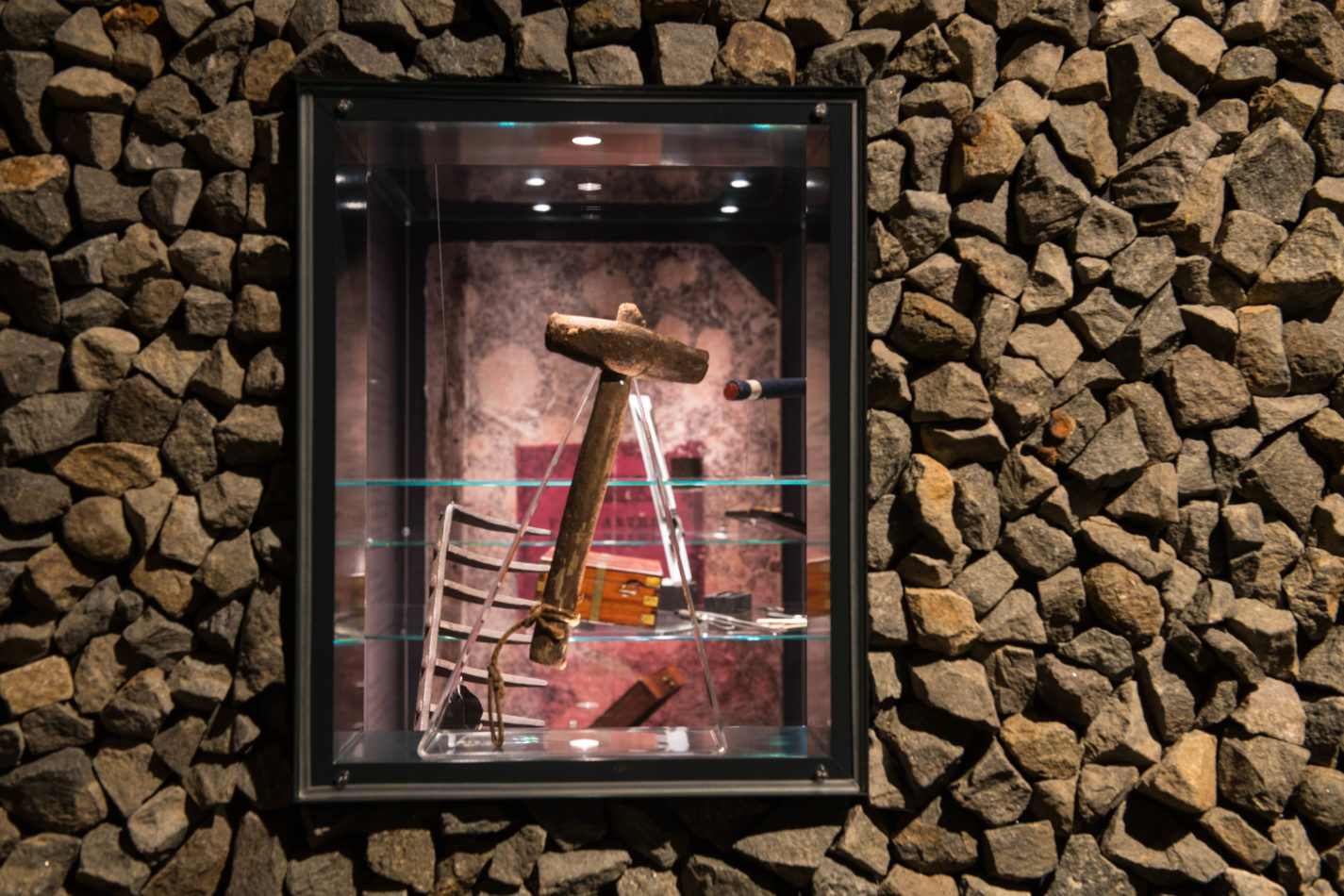The small things that matter
Port Arthur Historic Site has a literal treasure trove of antiquities, curiosities and outright oddities that are in the extremely capable care of our Conservation team.
Our grounds and gardens and the large buildings and ruins are impressive and tell us much about the penal settlement and later years, however the small things matter when it comes to creating and adding detail to the stories of the place and people.
While there are displays in various locations throughout the site, including the Gallery, Asylum Museum and buildings such as the Commandant’s and Parsonage, there are many items that only make rare appearances for special exhibits or are too fragile to come out at all.
This online exhibition is your chance to see some of these.
Not the usual ‘party’ attire
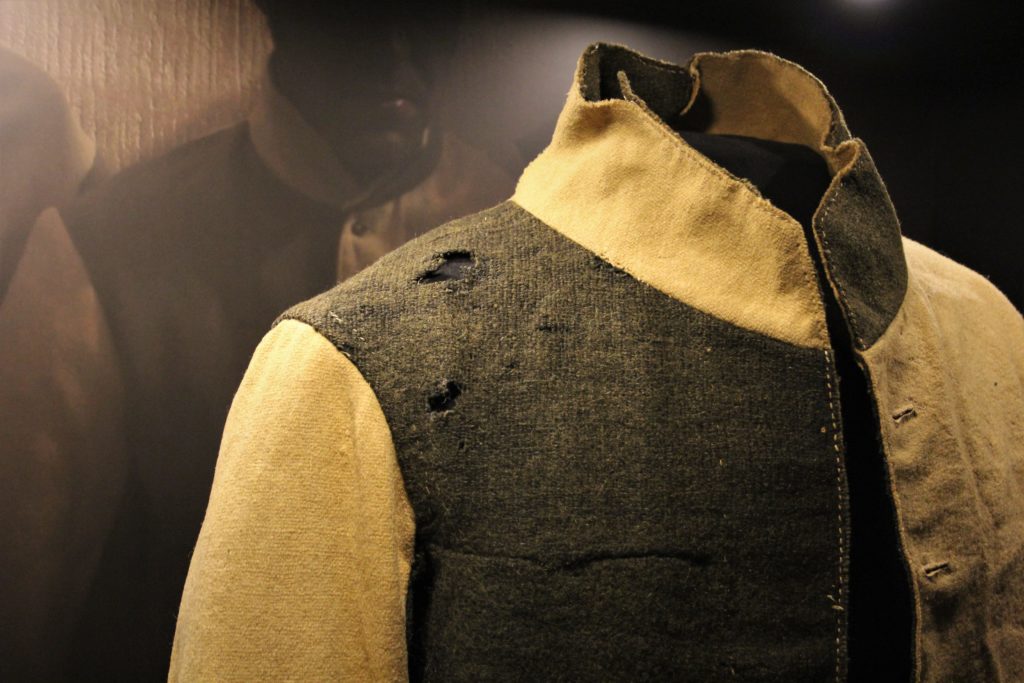
On arrival, convicts were mustered, given a haircut, described for the records, read the rules and were then allocated their belongings which included bedding, eating implements and clothing. This uniform had to last six months before it would be replaced and comprised of a jacket, waistcoat, trousers, shirt, boots and cap, with the outer suit being either yellow or ‘parti-coloured’ (half yellow, half black) and made it very clear who and where the prisoners were on site.
The small print

Look closely and you may be able to read ‘Commissariat Staff’ on the inner circle…
As this particular item was found in the earth under the house of where Thomas Lempriere lived (the only member of the Commissariat Regiment to have lived on site), it appears as though something went awry as he was getting dressed one day.
The Lempriere family often feature in the settlement’s history, due largely to Thomas’s diaries, and bring a different perspective to Port Arthur life in the 1830s and ‘40s with journal entries about social life, children (of which him and his wife had 12) and the day to day happenings in his role as Commissariat.
Put that in your pipe and smoke it
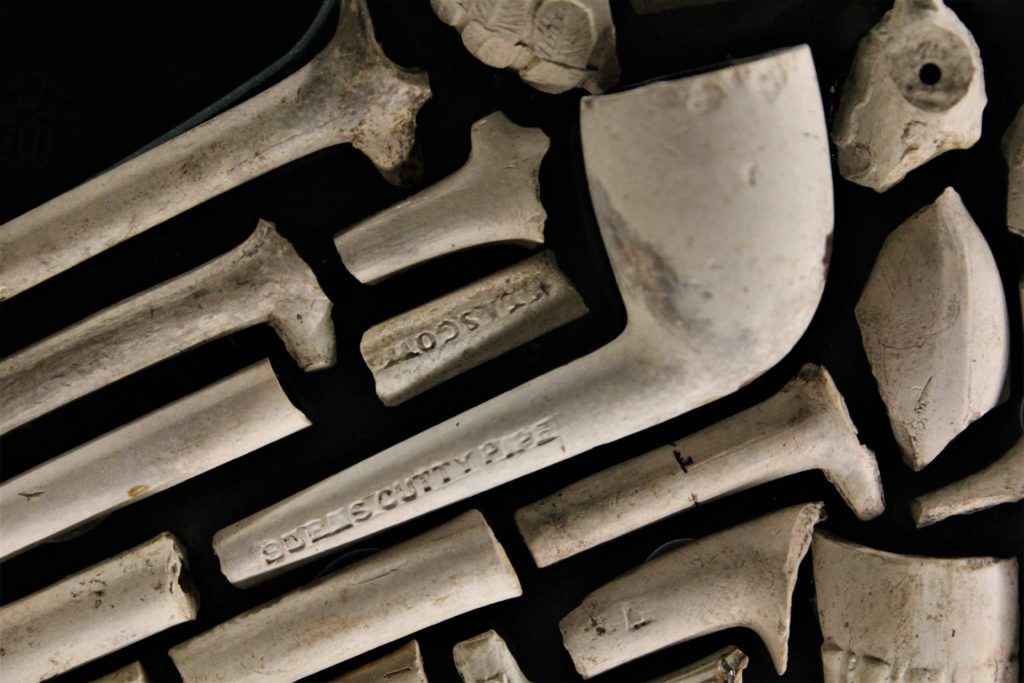
Fragments of pipes have been a common find during our archaeological projects on site, however convicts in general were not allowed to smoke. An exception was made on Christmas Day, where all convicts assembled in the yard and were given gifts of tea, sugar or tobacco. However, if a convict was found in possession of these more than three days later, they would be punished and there are multiple records of men who received solitary for holding onto the forbidden goods.
Keeping an eye on the time
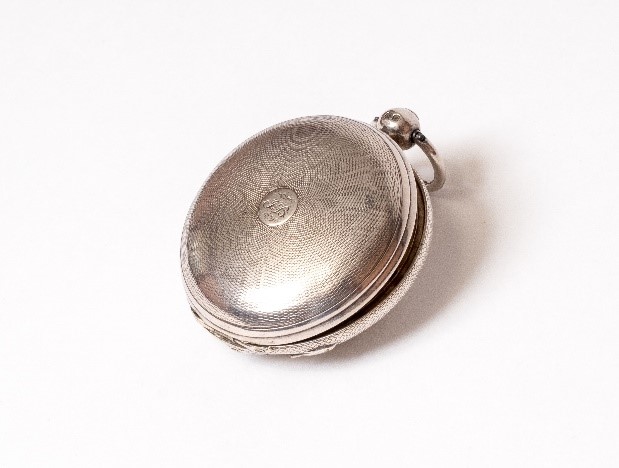
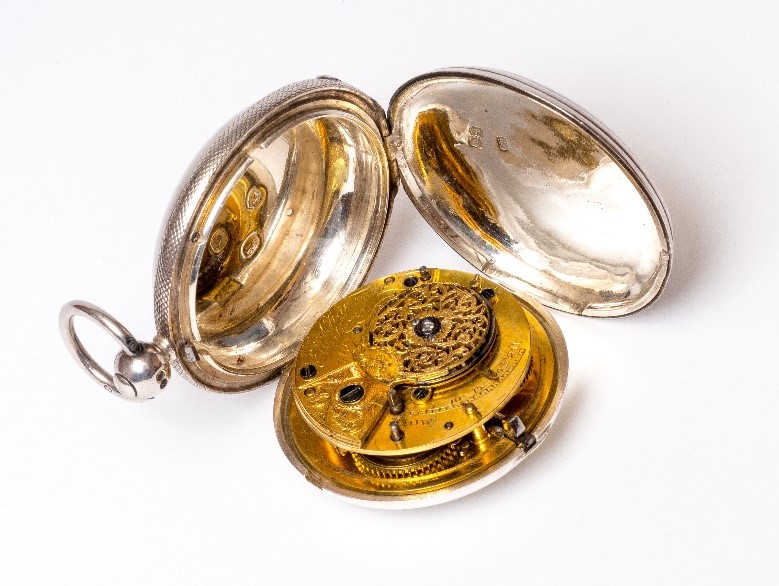
Petty theft was a common crime in the 1800’s, especially of items such as handkerchiefs, clothing/linen, food and jewellery.
This particularly intricate pocket watch was not from ill-gotten gain however, but rather belonged to James Boyd, the Civil Commandant at Port Arthur from 1853 – 1871.
It had been made by the craftsman, Mr John Chapman, in England and would have been worn on a waistcoat pocket, with a chain attached for security (to avoid those sneaky pickpocket’s fingers).
Walk a mile in their shoes
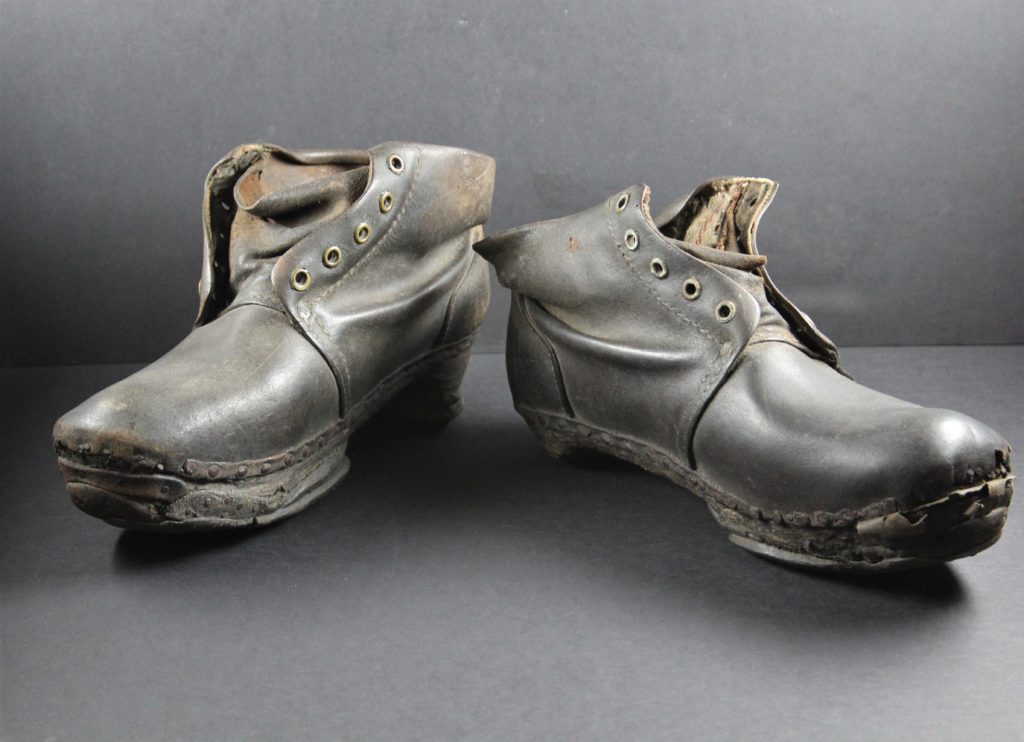
There were a variety of trades taught at Port Arthur. In part, this was a way of training these convicts with skills that could lead them to becoming productive members of society once their sentence had been served, but also as a means for Port Arthur to be self-sufficient as well as cheap labour and making items (and money) for the government.
One of the most prolific trades was that of shoe-making. Within a year of Port Arthur’s establishment, a shoemaker’s shop was built and in 1832 four hundred pairs of shoes and boots were sent out. By 1835, the records show:
“2,903 mens’ boots, 4 pairs of wellington boots, 200 pairs of boys’ boots, 2,130 pairs of womens’ and girls’ boots and 5,485 pairs of mens’ shoes ‘re-made’.”
While most of the footwear was sent elsewhere in the colony, these particular shoes shown were what the convicts wore as they went about the duties. How do you think you would go walking through the bush to collect fallen logs in these?

